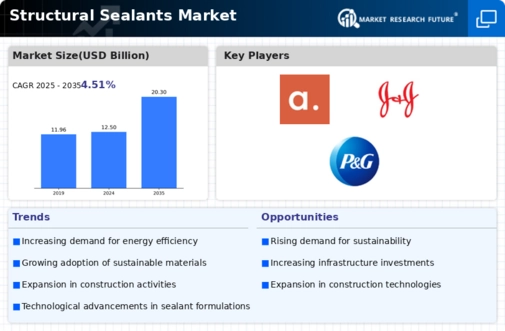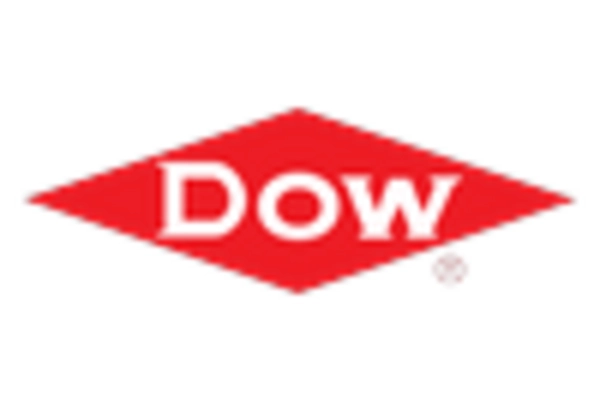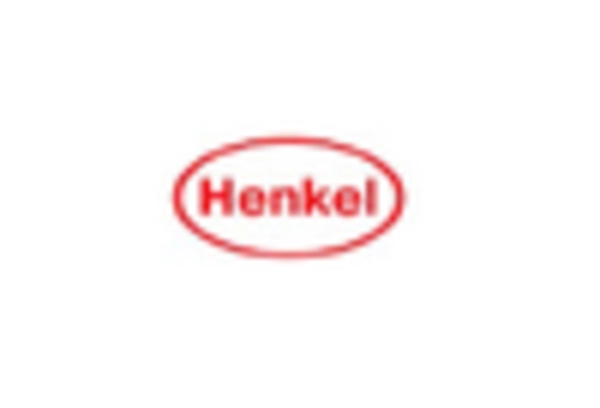Market Growth Projections
The Global Structural Sealants Market Industry is poised for substantial growth, with projections indicating a market size of 12.5 USD Billion in 2024 and an anticipated increase to 20.3 USD Billion by 2035. This growth trajectory suggests a compound annual growth rate of 4.51% from 2025 to 2035. Such figures underscore the increasing reliance on structural sealants in various applications, driven by factors such as urbanization, technological advancements, and regulatory support for sustainable practices. The market's expansion reflects broader trends in construction and manufacturing, highlighting the critical role of sealants in modern infrastructure.
Technological Advancements
Innovations in sealant formulations and application techniques are transforming the Global Structural Sealants Market Industry. The introduction of advanced materials, such as silicone and polyurethane, has improved performance characteristics, including adhesion, flexibility, and resistance to environmental factors. These advancements not only enhance the longevity of structures but also align with sustainability goals, as many new sealants are designed to be eco-friendly. As a result, the market is likely to witness a compound annual growth rate of 4.51% from 2025 to 2035, reflecting the industry's adaptation to technological progress and environmental considerations.
Rising Construction Activities
The Global Structural Sealants Market Industry is experiencing a surge in demand driven by escalating construction activities worldwide. Urbanization and infrastructure development are at the forefront, with countries investing heavily in residential, commercial, and industrial projects. For instance, the construction sector is projected to contribute significantly to the global economy, with the market expected to reach 12.5 USD Billion in 2024. This growth is indicative of the increasing need for effective sealing solutions that enhance durability and energy efficiency in buildings, thereby propelling the demand for structural sealants.
Diverse Applications Across Industries
The versatility of structural sealants across various industries is a key driver for the Global Structural Sealants Market Industry. These sealants find applications in sectors such as automotive, aerospace, and electronics, in addition to construction. Their ability to provide waterproofing, bonding, and insulation makes them indispensable in numerous applications. As industries continue to evolve and innovate, the demand for high-performance sealants is expected to rise, further propelling market growth. This diversification not only stabilizes the market but also opens new avenues for manufacturers to explore.
Increased Demand for Energy Efficiency
The Global Structural Sealants Market Industry is significantly influenced by the growing emphasis on energy efficiency in building design and construction. As energy costs rise and environmental regulations tighten, builders and architects are increasingly seeking solutions that minimize energy loss. Structural sealants play a crucial role in enhancing insulation and reducing air leakage, which can lead to substantial energy savings. This trend is expected to drive the market's growth, with projections indicating a rise to 20.3 USD Billion by 2035, as more stakeholders recognize the importance of energy-efficient building practices.
Regulatory Support for Sustainable Practices
Government regulations promoting sustainable construction practices are bolstering the Global Structural Sealants Market Industry. Many countries are implementing stringent building codes that require the use of environmentally friendly materials and energy-efficient designs. This regulatory landscape encourages manufacturers to innovate and develop sealants that meet these standards. As a result, the market is likely to expand as compliance with these regulations becomes essential for construction projects. The increasing focus on sustainability is expected to further enhance the market's growth trajectory, aligning with global efforts to reduce carbon footprints.

















Leave a Comment